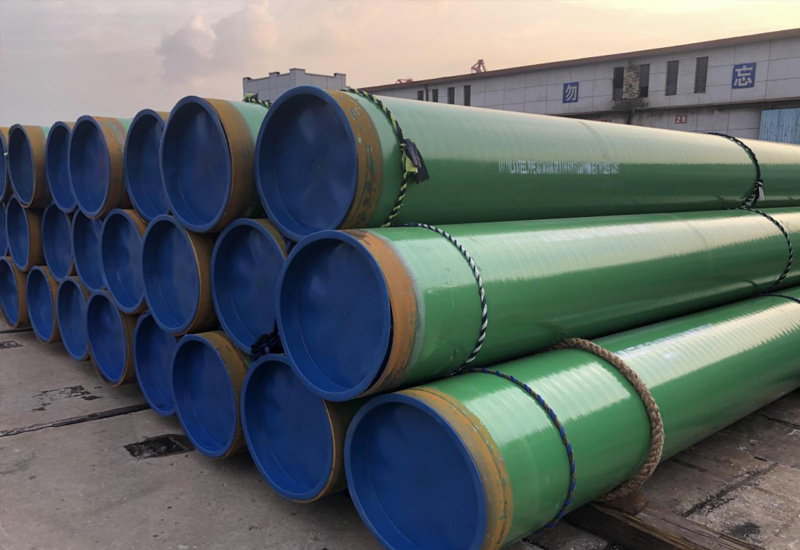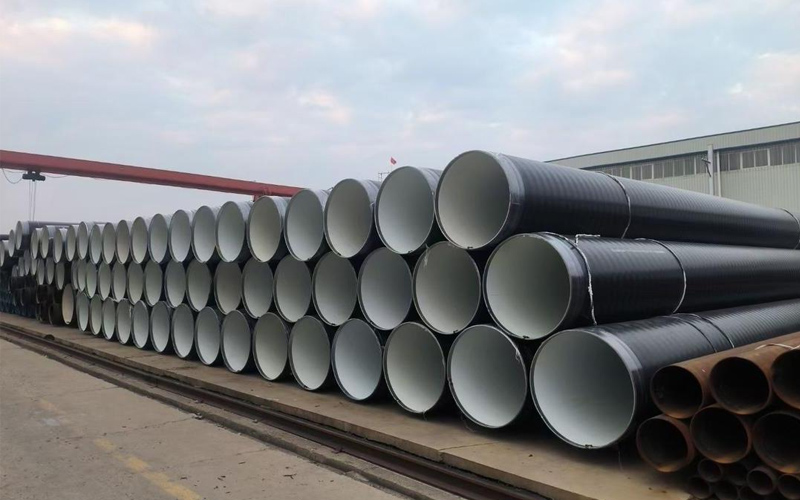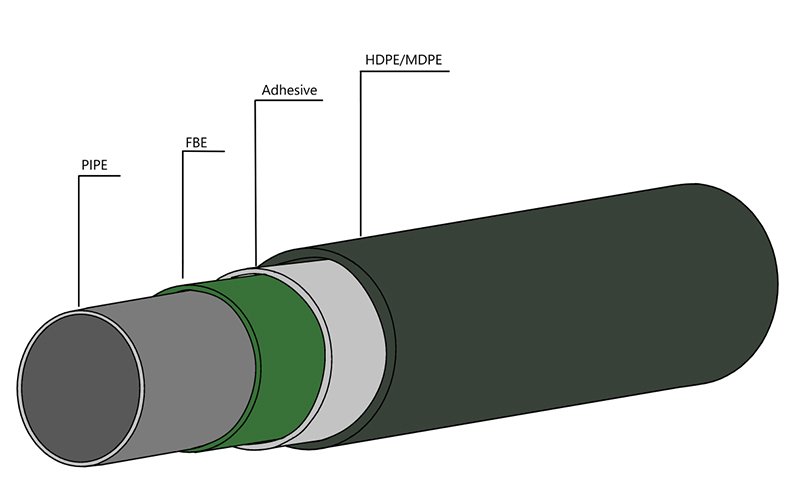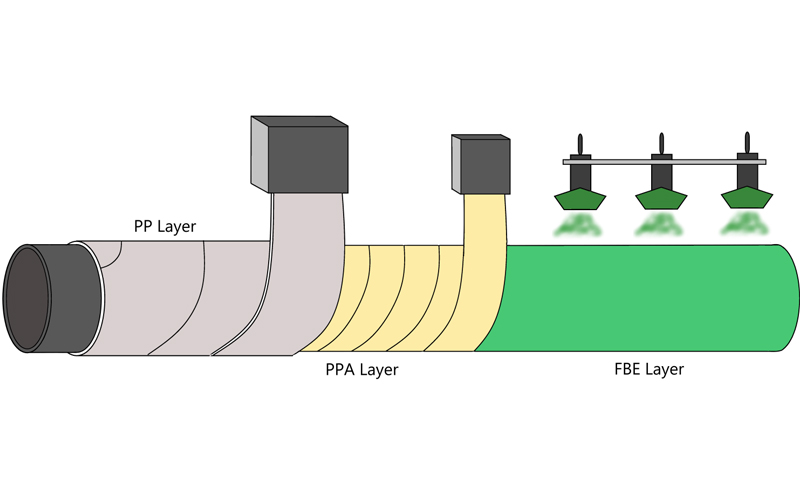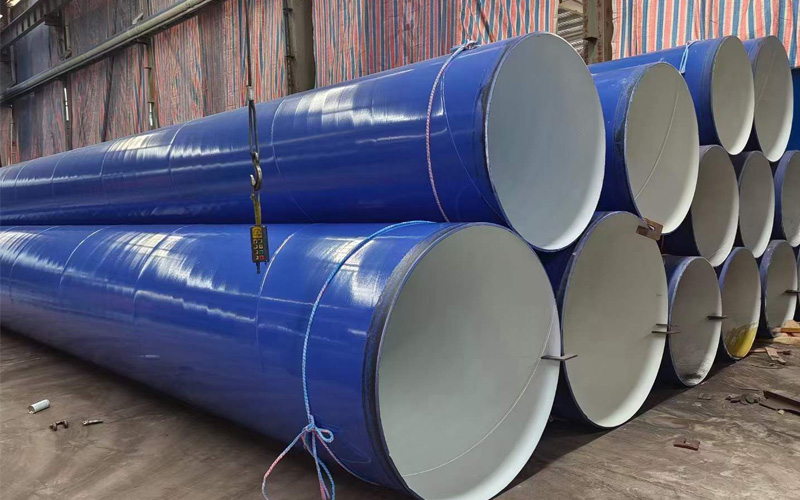3PE Coating Explained: A Deep Dive into the 3-Layer System
Introduction
If you’re a specifying engineer or corrosion professionals who has a need to protect an important buried pipeline, “3PE Coating” is what you will see as the industry standard. It is considered to be a strong three-layer system. But in order to really evaluate its potential and long term performance against the alternatives, more is needed. We can’t just know that it has three layers; rigorous engineering testing requires that we understand why these particular three layers are used, and how they act as a composite, synergistic system.
The observation from a material science point of view to understand why the 3PE coating pipe has the excellent performance. It is more than just a thick shielding from the elements, it is an engineered composite with each layer playing a unique and vital role in getting the job done. The boundaries between these layers are just as important as the layers themselves. One failed component or bond has the potential to compromise the entire system, and thus a solid understanding of what each layer’s role is – from chemical adhesion to mechanical toughness – is imperative for any pipeline professional to have.
Full technical break down of the 3PE (Three-Layer Polyethylene) coating system in this article. We will go beyond a general description and examine the function and physicochemical characteristics of each layer: the FBE (fusion-bonded epoxy) primer, the co-polymer adhesive, and the polyethylene topcoat. Supported by quantitative performance data, this guide will make a compelling case as to why this three-layer “armor” is the best option available for the protection of pipelines in the most severe environment on earth.

The Body: A Layer-by-Layer Materials Analysis
1. The Foundation: How the FBE Primer Provides Corrosion Resistance
The first coat for the blast cleaned steel pipe is the Fusion bonded Epoxy (FBE) primer. This layer is at the center of the system’s corrosion resistance. FBE is a thermoset polymer powder which is electrostatically applied to the heated pipe surface (usually 180-220°C) where it melts and flows and a chemical cross-linking takes place. This process called curing turns powder into a solid, moisture impermeable and very well bonded plastic film.
Its corrosion resistance is two-fold. It creates a strong chemical and mechanical bond to the steel substrate. This aggressive adhesion forms an impenetrable barrier, which eliminates the under-film permeation of moisture and oxygen – the necessary electrolytes to corrosion. Secondly, this strong bond has an exceptional resistance to cathodic disbondment. When a pipeline is being cathodically protected, a tiny coating holiday on that pipeline — like a small hole — is turned into a source for electrochemical activity. A poorly adhered coating can be “peeled” or disbonded from the steel surface by these processes, increasing the exposure of the pipe to potential corrosion. The FBE layer’s strong bond to the steel also greatly resists such disbondment, allowing the corrosion protection system as a whole to perform for many years.
2. The Critical Link: The Co-polymer Adhesive’s Bridging Function
The 3PE system would not be complete without its middle layer: the co-polymer adhesive. It serves as a strong chemical tie that bonds the chemically different layers of epoxy and polyethylene that would otherwise not adhere, providing a permanent lock between them. This adhesive is normally a modified polyethylene, for example a maleic anhydride -grafted polyethylene, which is suitable for two functionalities.
During processing, the adhesive is extruded on the FBE primer which is still warm. Due to functionalities on the molecular level of the adhesive, strong covalent bonds exist between the epoxy layer and the adhesive. At the same time, the adhesive’s polyethylene backbone is very compatible with the final polyethylene topcoat. When the topcoat is installed, its melted polymer chains intermix and bond with the adhesive layer creating upon cooling a melt-fused, migrate-retardant, track-off resistant bond. Without this layer of adhesive, the PE outer layer would be nothing more than a loose sleeve—easy to de-laminate with the shear from mechanical impact, by soil movement, or temperature variations. The bonding agent causes the trio to act like a single, monolithic coating that can take tremendous abuse without falling apart.
3. The Outer Shield: How the PE Topcoat Provides Physical Protection
The outermost layer is a densely packed tough HDPE layer. The role of the PE topcoat is mainly to introduce a good mechanical protection, the FBE layer takes care of the chemical and electrochemical aggressions. Pipelines are subject to a constant onslaught of physical abuse for buried pipelines, is this layer, this outer layer.
The high impact strength and the high penetration resistance ensure that the underlying anti corrosion layer will not be damaged during transport, handling by means of cranes and slings and during backfilling where it is exposed to contact with rocks and other debris. In addition, the outstanding abrasion resistance shields the pipe against long-termed soil movements and frictions. HDPE has a superior performance as electrical insulator and it is extremely impermeable to water which creates a second layer of protection against moisture further increasing the protection of cathodic protection system.This powerful, full-strength outer guard protects the vital FBE layer from getting compromised, allowing it to maintain its anti-corrosion capabilities over the entire design life of the pipeline.
4. Quantitative Analysis: The Synergy of the 3-Layer System
The overall 3PE system provides much better performance than each component alone. How Typical Properties and Primary Functions are Related The following table shows the typical properties and the main engineering function of each layer, which helps to understand how the layers complement each other.
| Layer Component | Typical Thickness Range | Primary Engineering Function | Key Performance Metric (per DIN 30670) |
| 1. FBE Primer | 80 – 150 µm (0.08 – 0.15 mm) | Corrosion Resistance & Substrate Adhesion | Cathodic Disbondment: ≤ 7 mm radius @ 23°C |
| 2. Co-polymer Adhesive | 150 – 250 µm (0.15 – 0.25 mm) | Inter-coat Bonding (FBE to PE) | Peel Strength: ≥ 35 N/cm @ 23°C |
| 3. PE Topcoat | 1.8 mm – 4.0+ mm | Mechanical Protection & Electrical Insulation | Impact Resistance: No holidays @ ≥ 10 Joules |
| Complete System | ~2.0 – 4.5 mm | Composite Protection System | Specific Electrical Insulation Resistance: ≥ 10⁸ Ωm² |
This information demonstrates the synergy of the system: the FBE offers superior corrosion protection, the adhesive bonds with high peel strength and ensures the bond integrity, the PE topcoat can be subjected to heavy physical abuse, and the entire system provides outstanding electrical insulation.
Conclusion
3PE coating is an excellent example of engineering for composite materials, in which the end performance is deliberately designed to be well above that of each individual material. Its unique protective capabilities do not rely on one single thick layer, but on the combination of three unique layers bonded together. It combines the FBE primer’s tenacious, anti-corrosive bond to steel; the co-polymer adhesive’s vital chemical role of bonding the layers together; and the polyethylene topcoat’s robust mechanical strength that protects the entire system from the physical environment. To anyone charged with engineering or managing pipeline protection decisions, this conjoined function should be evident. In a project where the primary concerns are long-term corrosion and potential for mechanical damage during or after installation, the multi-layered nature of the 3PE system provides the greatest engineering value-based and risk-based solution. A manufacturer dedicated to quality knows the integrity of each layer, and the chemical bonds between them, is what matters to success. This is the level of material and process understanding that turns three simple layers into 50 years of armor for critical infrastructure.
Get Your Custom Steel Pipe Quote Today!
Provide us with your project details (like application, specifications, quantity). Our experienced team will respond with a tailored solution and competitive quote within 24 business hours.




